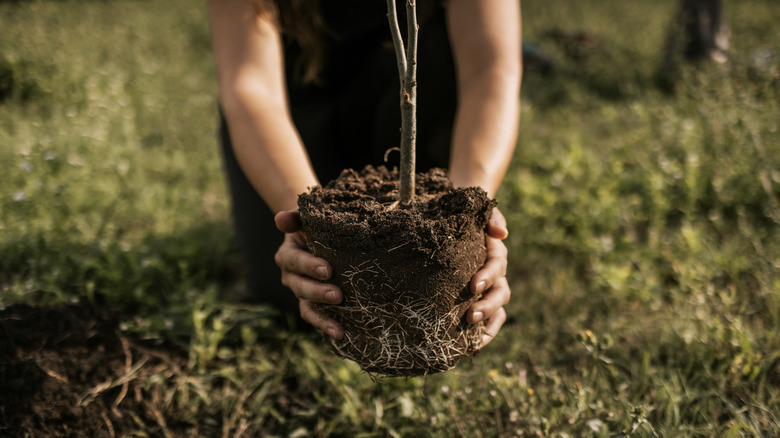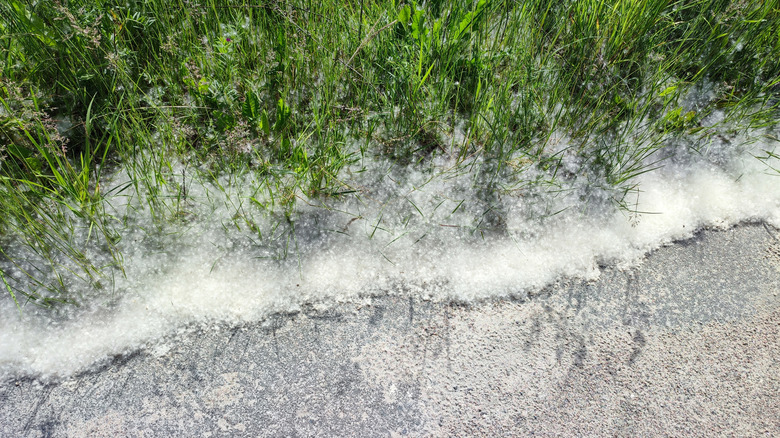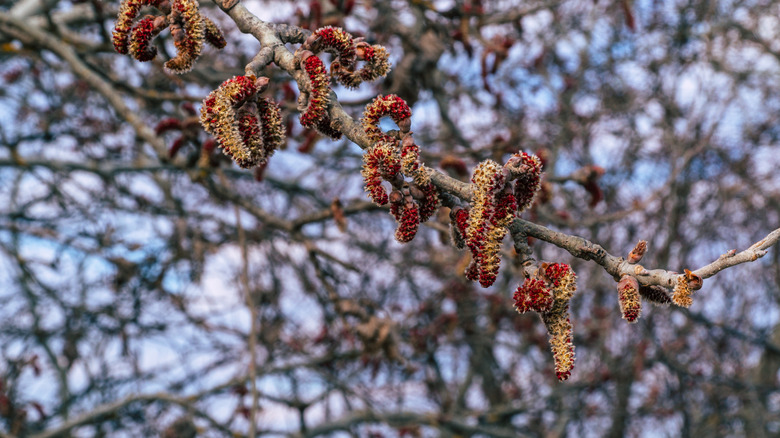The One Tree You Shouldn't Be Growing Right Next To Your House
People plant trees for comfort. Some want shade, others want beauty, and some just want a promise of something lasting. However, not every tree belongs beside a home. You have to pick your tree carefully. At times, choosing the wrong one can be an expensive mistake. You might end up with cracked sidewalks, storm-damaged roofs, and clouds of messy seed fluff every spring. This is exactly the kind of trouble cottonwood (Populus deltoides) can bring if you grow it right next to your house.
Among fast growing shade trees to cool off a hot backyard, Eastern cottonwood is probably the riskiest. It grows rapidly and large. With adequate moisture, it can add as much as eight feet a year to its height, and can attain a height of about 75 to 100 feet and a spread of 50 to 75 feet. Plant it too close, and before long, you will be seeing it pushing up to your windows and leaning over your balcony. But that is not even the worst part.
The real damage happens under the ground where you can't even see it. Its roots spread aggressively and can invade everything from lawns to patios. And if you can somehow stop all of that, you won't definitely be able to stop the fluffy seed mess it creates from invading your home. At times, it can coat your entire neighborhood white.
Eastern cottonwood has messy seeds and fast-growing roots
Eastern cottonwood has cotton-like hairs surrounding its seeds, hence the name. But these seeds are the worst. They can make a really big mess, covering yards, roofs, patios, and driveways in a blanket of white fluff. And if you leave them to gather near a house, they can clog gutters, jam air conditioners, and fill pool filters. So, unless you have the best rake for keeping your lawn in tip-top shape that you really like to use, you sure don't want to clean your yard every day.
And the litter is not even the worst part. When these fluffy seeds pile up around the house, they can even catch fire. And if they find a way into your home, they will stick with literally everything and can cause allergies. And then there are its roots. Eastern cottonwood roots grow aggressively, and they stay close to the surface. But what makes them really annoying is that they spread and can even cover an area larger than the tree's height in search of water.
Also, these roots invade. They penetrate sewer lines and plumbing, causing clogs and breaks. Leave them so and they can uplift sidewalks, crack driveways, and even compromise house foundations. Furthermore, roots push up through the soil, leaving the ground bumpy and easy to trip on.
A few more reasons to skip growing Eastern cottonwood near your home
If the drifting fluff and creeping roots don't scare you away, there's one more reason you shouldn't be growing eastern cottonwood right next to your house. Its wood is weak. And that, combined with its very rapid growth and large size, is not something you would want. Its branches break easily in strong winds or after an ice storm. And, you can't just leave them there. These broken branches damage roofs, dent cars, and take down power lines.
On top of that, there is the added cost of having them removed if you can't do it yourself. All in all, you need to avoid putting Eastern cottonwood right next to your home. If you still want to plant it, though, make sure there is adequate distance between the tree and any structural elements of your home. Also, make sure you grow the male plant, as it doesn't produce that cottony, fluffy mess. But the male plants are still susceptible to plenty of diseases.
Some include dieback, cankers, leaf spots, rusts, and powdery mildew. And if that was not enough, Eastern cottonwood has a lot of pests. Examples are borers, aphids, caterpillars, and scales. So, if you would rather just avoid the whole thing, there are many other small trees that won't overtake your yard.


